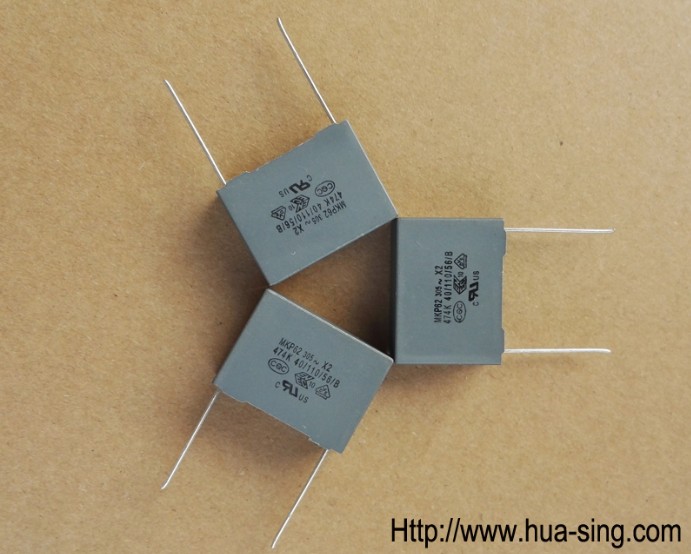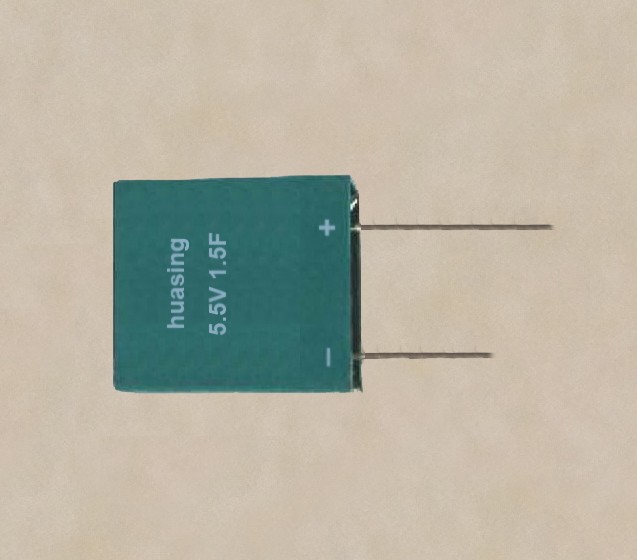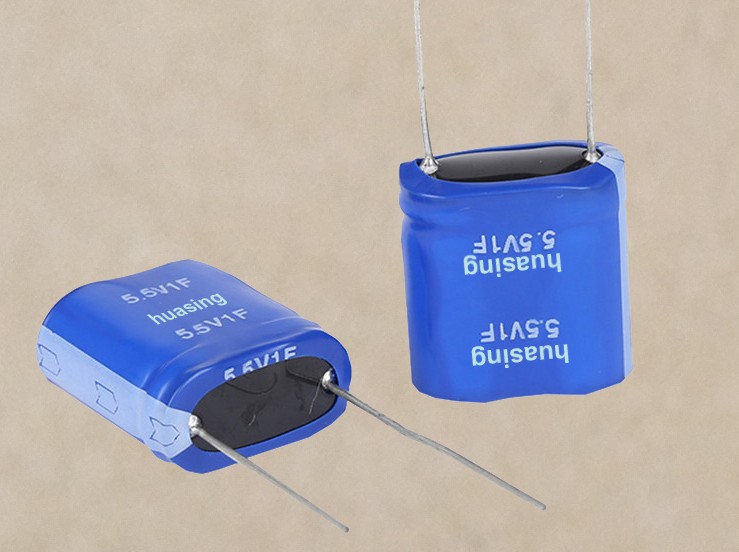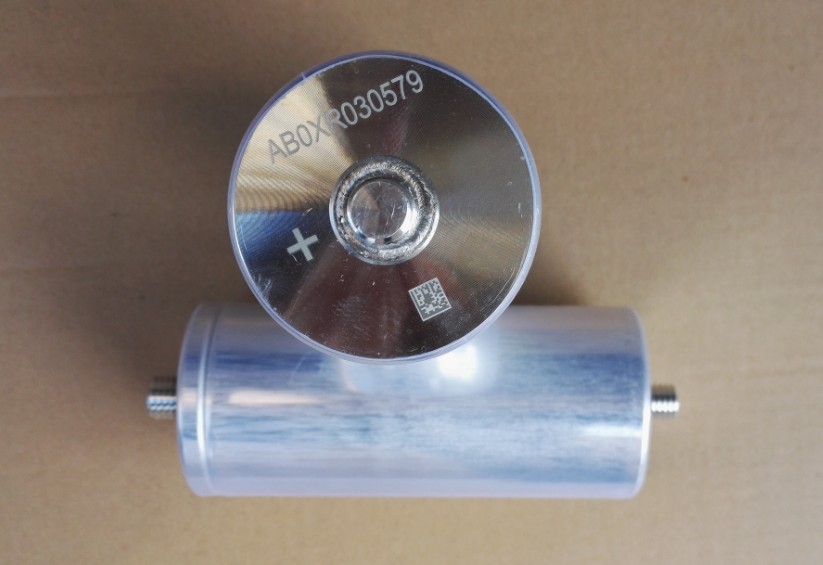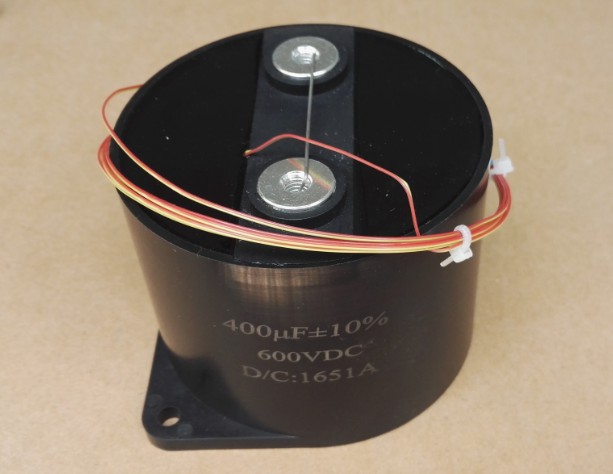The replacement of aluminum electrolytic capacitors with DC-Link polypropylene film capacitors
2018/7/16 4:31:16
1 Introduction
Aluminum electrolytic capacitors are the most critical components that limit the service life of inverters. The main reason is the life of aluminum electrolytic capacitors, especially in applications such as high harmonic currents and high temperatures. The life of aluminum capacitors is the shortest compared to other components.
2 "DC support" and "DC-Link" capacitors
When DC power is used as the power supply for the inverter, since this DC power supply needs to be connected to the inverter chain through the DC bus, this power supply method is also called "DC-Link". Since the inverter needs to request a pulsating current with a high effective value and a high amplitude from the "DC-Link", a high ripple voltage is generated on the "DC-Link" to make the inverter unbearable. To this end, it is necessary to "support" "DC-Link" to ensure the power quality of "DC-Link".
In most cases, the component that supports "DC-Link" is a capacitor. The role of the "DC-Link" capacitor is mainly to absorb the high amplitude ripple current from the inverter to "DC-Link", preventing it from generating a high amplitude ripple voltage at the "DC-Link" impedance, making the inverse The supply voltage fluctuation at the transformer end remains within the allowable range.
The second function of the "DC-Link" capacitor is to prevent voltage overshoot and transient overvoltage from the "DC-Link" from affecting the inverter.
3 The role of DC bus capacitors for power frequency multiphase rectification
Three-phase bridge rectifier circuit or 12-phase rectifier circuit is used in applications where the load current is not abrupt. It is not necessary to bridge the DC bus capacitor at the rectified output. Since there is no sudden change in current, the induced potential of the parasitic inductance of the rectifier and AC power supply is generated. It does not affect the output voltage very high.
However, when the load is a switching power converter, the switching power converter will request the ripple power at the switching frequency from the DC bus. If this current flows into the parasitic inductance of the DC bus and the AC side, it will produce an intolerable switching frequency. Ripple voltage. From this point of view, the DC power supply is no longer only providing DC current, but needs to provide a pulse current with a rich AC component. At this time, the DC power supply requires not only a low DC internal resistance but also a wide frequency bandwidth. Both have good low impedance. The low impedance of this wide frequency band is not provided as a DC power supply for the rectifier. To obtain a good low frequency impedance in a wide frequency band, it is necessary to apply a capacitor with good performance. The capacitor is used to reduce the AC impedance of the DC bus by utilizing the characteristic that the capacitor voltage cannot jump and the capacitance of the capacitor decreases as the frequency increases.
From this point of view, the capacitor connected in parallel with the three-phase bridge rectifier or the 12-phase rectified output DC bus is no longer a smooth voltage filter capacitor, but a power supply bypass capacitor, or "DC support", "DC-Link". Capacitor.
"DC support" and "DC-Link" capacitors can be selected from aluminum electrolytic capacitors or thin film capacitors. Since the value of the ripple current that the aluminum electrolytic capacitor can withstand is relatively low, it is necessary to meet the high amplitude ripple current in the "DC support" and "DC-Link" applications, which requires the selection of the aluminum electrolytic capacitor. The size of the wave current is chosen to be an aluminum electrolytic capacitor. If the load produces a ripple current of 20 A, a capacitance of 1000 μF is selected.
From the above description, it can be concluded that the role of the DC support capacitor is to provide a “non-inductive” DC “power supply” for the load when the load current fluctuates, eliminating the parasitic inductance that cannot be estimated and has a large magnitude between the switch and the power supply. The resulting voltage spikes of unwanted televisions.
Although this solution may be optimal, the price may be very high and the general application will not accept it. So, is there a better solution? The conclusion is that there are several solutions that are low cost and perform well.
4 Price Compare
The key to replacing aluminum electrolytic capacitors with film capacitors is the price issue. If a film capacitor with a rated voltage of 700V can achieve a capacitance of 1μF to 2μF per RMB, it can replace the aluminum electrolytic capacitor.
Some capacitor manufacturers believe that the price of RMB 2μF per yuan is absolutely impossible to manufacture, and some capacitor manufacturers believe that it is achievable after careful calculation. Such a solution would be better if there is sufficient capacity and is close to or lower than the aluminum electrolytic capacitor in price. When a film capacitor is required to replace an aluminum electrolytic capacitor, it should be replaced with a small capacity replacement ratio.
5 film capacitors replace aluminum electrolytic capacitor solutions
The biggest obstacle to replacing aluminum electrolytic capacitors with film capacitors is the price of film capacitors. If the capacitor is replaced by one to one, it is definitely not realistic in terms of price. It can be known from the above analysis that the multi-phase rectified output filter capacitor is no longer smooth, but the power supply bypass of the DC bus, so as long as the capacitance can meet the requirements of the power supply bypass. In fact, the power supply bypass requirement as a DC bus is not as large as that of an aluminum electrolytic capacitor, resulting in a poor current carrying capacity of the aluminum electrolytic capacitor and a high ESR.
Since the capacitor filtering of the three-phase bridge rectifier is actually a DC support, DC-Link or DC bus bypass capacitor. The key to this problem is whether the current withstand capability of the "filtered" capacitor meets the requirements. Film capacitor manufacturers have produced corresponding metallized polypropylene film capacitors. The data of Huasing's SHD series DC-Link single-sided metallized polypropylene film capacitors are shown in Table 1.
Table 1

Huasing's SHD, SHE series of DC-Link single-sided metallized polypropylene film capacitors are similar in shape to bolt-type aluminum electrolytic capacitors, and the replacement of aluminum electrolytic capacitors with such film capacitors requires only minor modifications.As can be seen from Table 1, Huasing's SHD series of DC-Link single-sided metallized polypropylene film capacitors can withstand high ripple currents and are essentially immune to operating temperature limitations. For example: 300μF/700V SHD-700-300 polypropylene film capacitors have a current withstand capability of 50A and two parallel connections of 100A. It is much higher than the 15A ripple current value that 3900μF/400V aluminum electrolytic capacitor can withstand. The “filter” capacitor of the inverter above 15kW needs to “filter” about 60A rectification filter and the switching ripple current generated by the inverter. . From this data, aluminum electrolytic capacitor heating is inevitable, and the life is short.
5 Test and test results
The following is an alternative experiment in which three film capacitors replace aluminum electrolytic capacitors.
(1) Test 1
A 15kW inverter normally uses two series of 3900μF/400V aluminum electrolytic capacitors in series with an equivalent capacitance of 1950μF. Huasing's SHD series of DC-Link single-sided metallized polypropylene film capacitors can replace aluminum electrolytic capacitors, which can be 300μF/700V 2 parallel capacitance replacement ratios of 30.7%, or 250μF/700V 2 parallels, replacement ratio 25.6% . The test results for operation at full power are listed in Table 2.
Table 2 Huasing film capacitors replace aluminum electrolytic capacitor test results

From the results in Table 2, it can be seen that the peak-to-peak voltage at full load after replacing the ratio with low capacitance significantly increases or exceeds the peak of the rectified output voltage when the filter less capacitor of the ideal state of 13.3% (76V) of the no-load voltage is ideal. - Peak. The effect of this voltage change on the output needs to be considered when designing the drive control strategy.
It can also be seen in Table 2 that as the capacitance of the filter capacitor decreases, the average value of the output voltage rises, which is different from the concept that the larger the capacitance of the conventional filter capacitor is, the higher the average value of the output voltage is. The reason may be that as the capacitance of the filter capacitor decreases, the conduction angle of the rectifier increases, and the voltage drop of the current pulse in the internal resistance of the grid decreases; and the peak-to-peak value of the output voltage is higher than the ideal output voltage of the resistive load. The cause of the peak-to-peak may be due to the parasitic inductance of the AC grid.
(2) Test 2
A further alternative example is a 30 kW inverter that typically uses a 3300 μF/400 V aluminum electrolytic capacitor 2 string 2 and. The SHD series single-sided metal polypropylene film capacitors of 250μF/700V Huasing were used to replace the original aluminum electrolytic capacitor banks in parallel, and the replacement ratio of the capacitance was 27%. The long-term operating temperature rise is only 2 °C, the motor runs normally, and there is no abnormality.
(3) Test 3
The third replacement test is to replace the aluminum electrolytic capacitor in the 660V AC input voltage converter with a film capacitor. Since there is no 660V induction motor at hand, the load can only replace the induction motor with a resistor box. The test results are listed in Table 3.
Table 3 Huasing film capacitors replace aluminum electrolytic capacitor test results
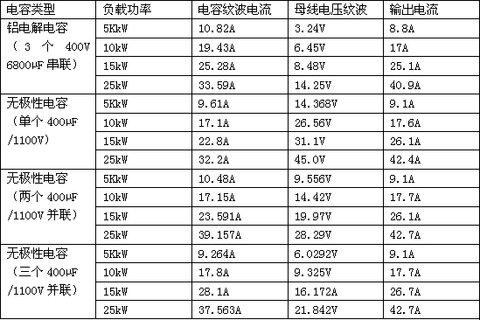
6 Conclusions
The replacement of aluminum electrolytic capacitors with DC-Link polypropylene film capacitors with large ratio of capacity replacement can meet the requirements of inverter "filter" capacitors. If the price of the polypropylene film capacitor at this time is not higher than that of the aluminum electrolytic capacitor bank, the alternative can achieve the performance under the same economical conditions.
After replacing the aluminum electrolytic capacitor with a polypropylene film capacitor, since the polypropylene film capacitor basically has no life limit problem, the trouble of the inverter periodically replacing the aluminum electrolytic capacitor and the cost increase are avoided in the case of high reliability application.

 Tel:86 0513 65085106 Fax:86 0513 81164838
Tel:86 0513 65085106 Fax:86 0513 81164838 